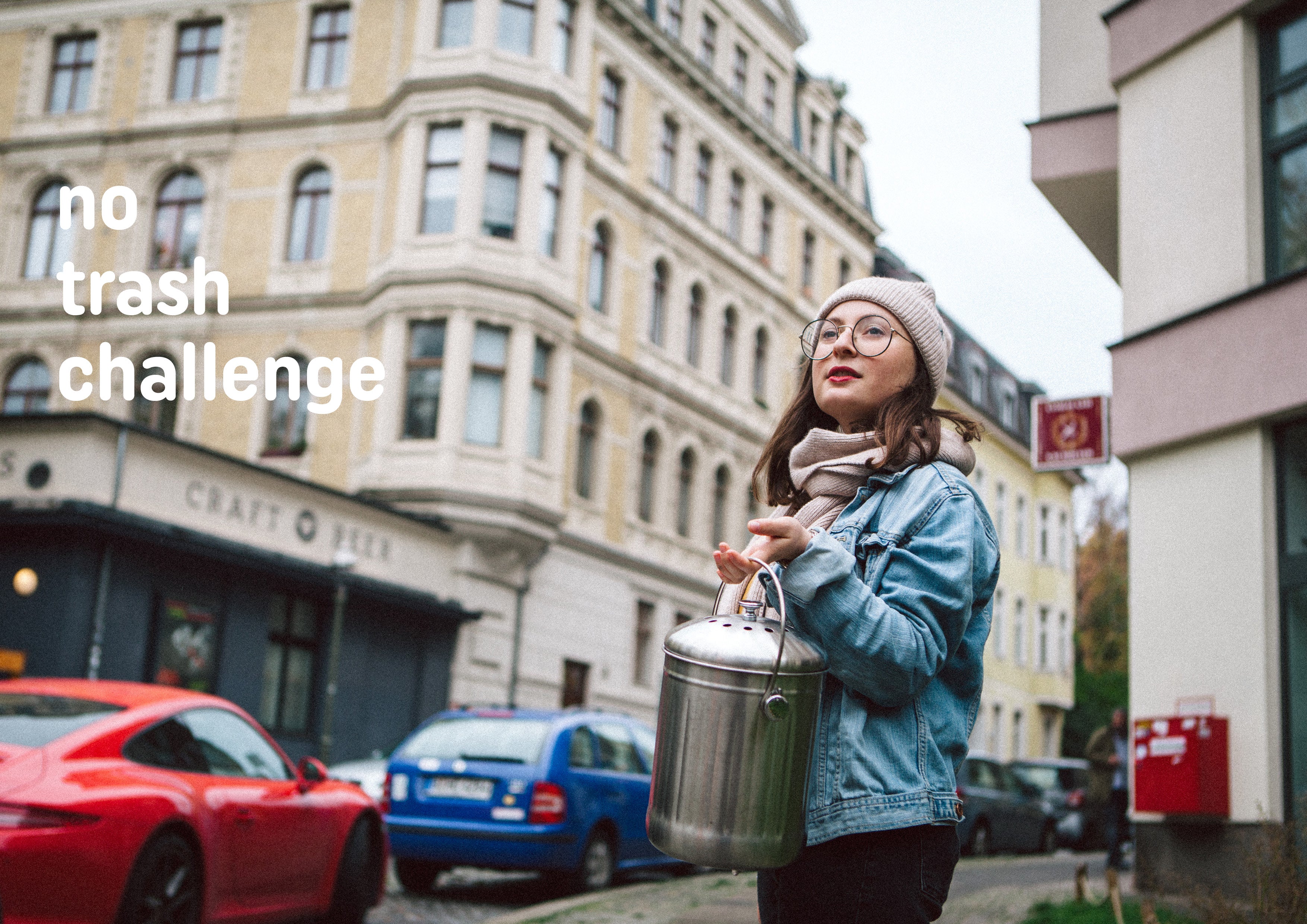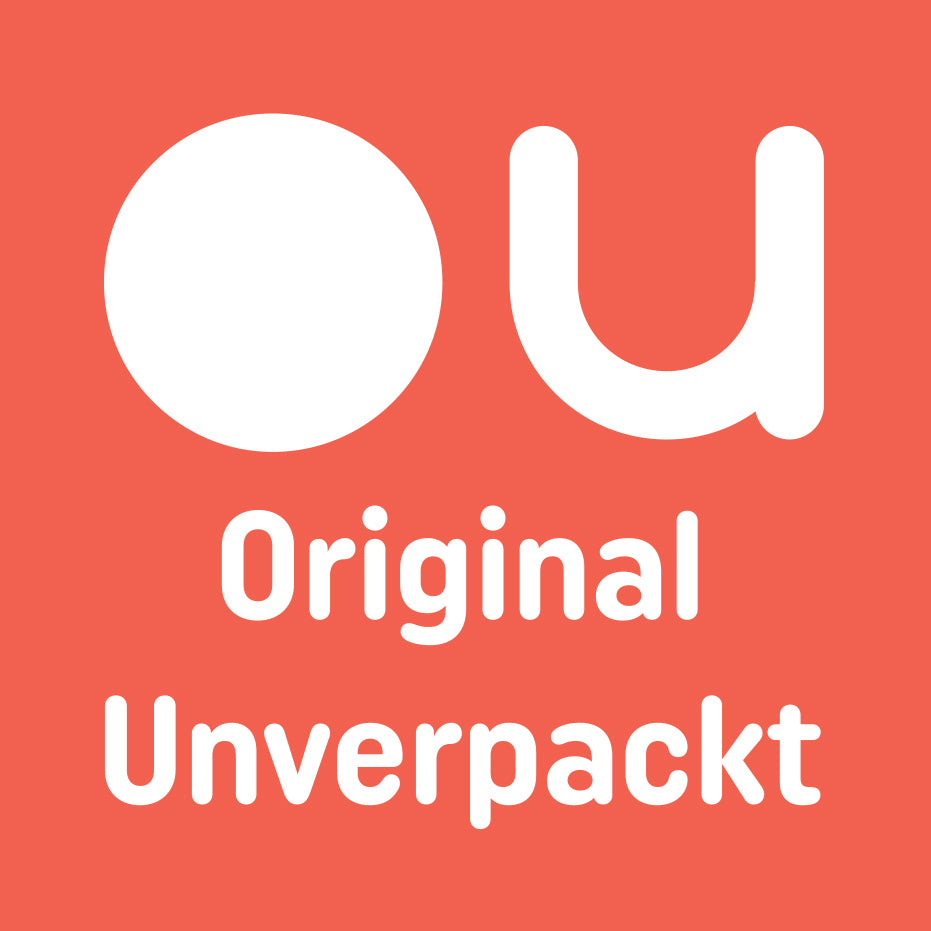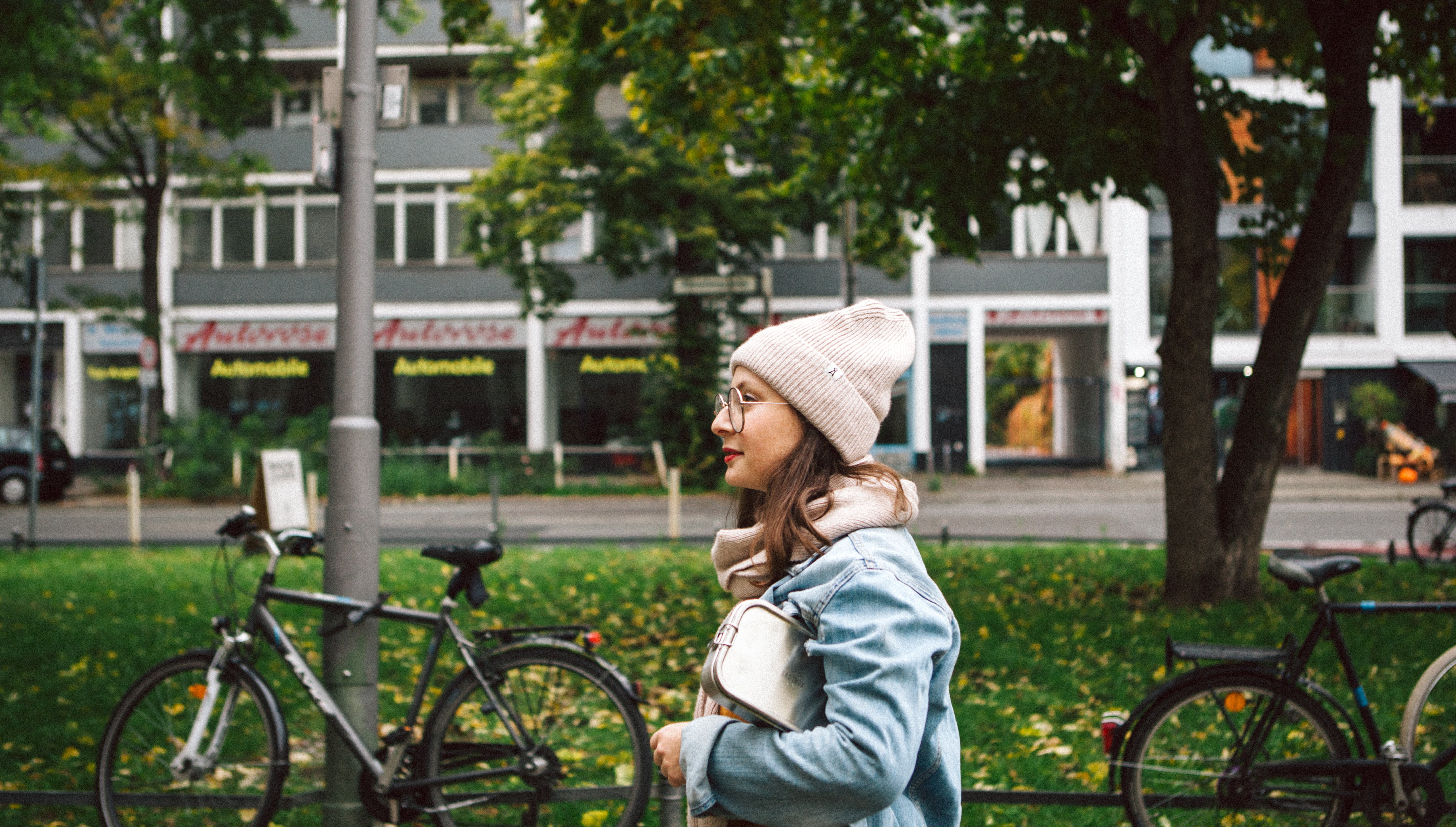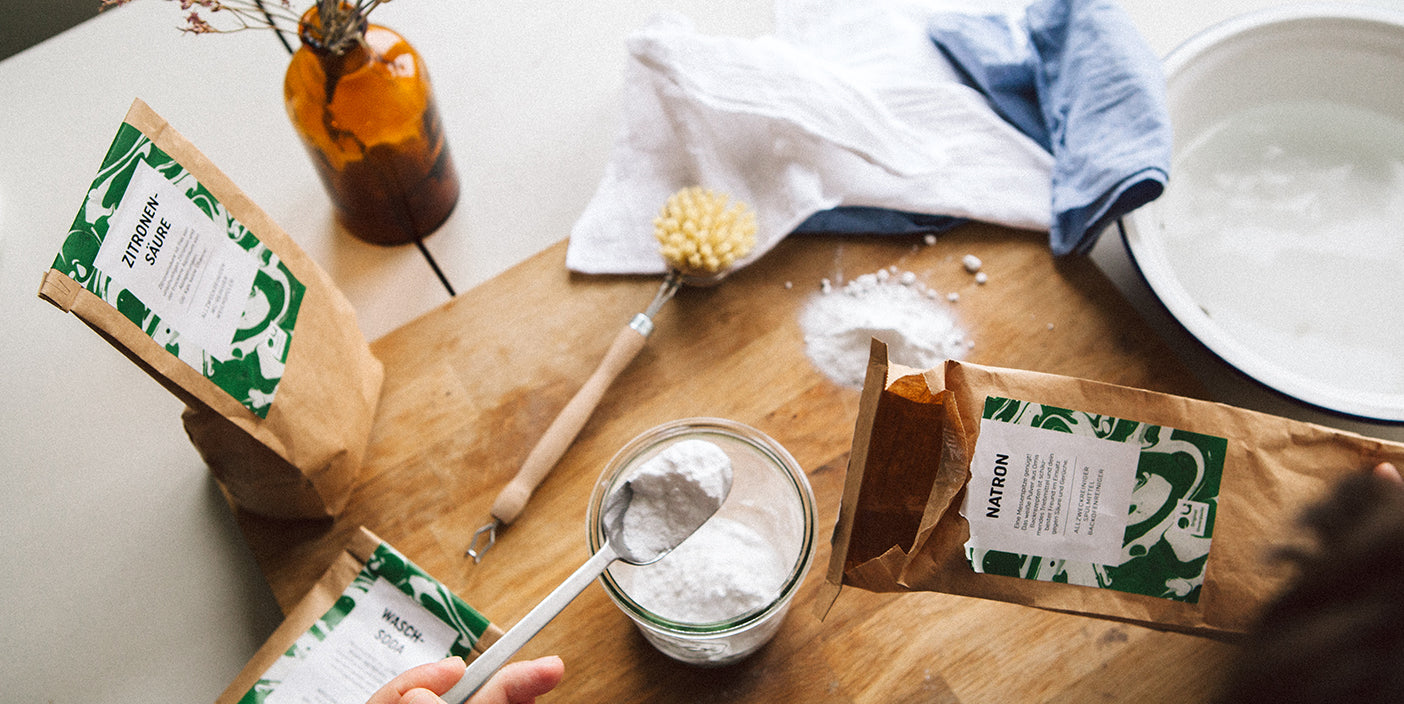
No Trash Challenge
Let the journey begin..
We want to make it easier for you to start living a more sustainable life. Take one step at a time. Life doesn't have to become plastic-free overnight. It's a process and it's perfectly fine if it takes time. With our No Trash Challenge, we take one step towards a more environmentally friendly life every day.
We suggest things that you can't or don't want to change right now? No problem. Save the post and maybe come back to it later. We suggest things that you're already doing? Time to pat yourself on the back and be happy.
The challenge is intended to motivate and inspire you all. However, it is not a competition with the goal of living a completely zero-waste lifestyle. We don't do that either. It's about reducing wherever possible.
We hope you enjoy your trip.

|
Day 1: Garbage analysis |
|
Before we can avoid waste, things get really dirty: We look at our waste. We analyze where it comes from and how we can avoid it in the future. If you read a lot of magazines, for example, you could consider only purchasing them digitally on your smartphone or tablet. Write down the top 5 waste producers and think about alternatives. |
|
Day 2: Shopping planning |
|
Most of the waste we produce is generated by food packaging. So the second challenge is theoretical at first: Plan your zero-waste shopping. Look in your fridge and pantry and think about and research where you could buy these things loose, unpackaged, or at least plastic-free, i.e. in paper and glass. It's best to write it down straight away. A well-organized shopping list is the be-all and end-all of sustainable shopping. What are your biggest shopping challenges? Where is plastic-free not yet possible? |
|
Day 3: Shopping preparation |
|
Now it's time to get down to business! In preparation for shopping, you need jars, jute bags, cotton drawstring bags and maybe even nets for fruit and vegetables. You can sew these yourself from old fabrics or buy them ready-made from your local unpackaged store. Storage jars and old preserving jars are for storage and transport. So just collect them, wash them out and remove the label. We recommend that you always have a few drawstring bags and nets in your bag. Just in case. It also literally makes shopping several kilograms lighter if you put everything in bags in the store and then transfer them to jars for storage at home. |
|
Day 4: Online |
|
How sustainable are you online? Use Ecosia as a search engine, choose an email provider that uses clean electricity and read online magazines that deal with ecological issues. A sustainable cell phone provider is the icing on the cake. There are actually few things that are as quick and easy as switching to green electricity. A call or message to your green electricity provider and that's it. Most providers take care of the annoying registration formalities. |
|
Day 5: Electricity |
|
Today we are calculating our green electricity tariff. By switching to green electricity you can easily make a big difference. With every switch, the proportion of renewable energies in the German electricity mix increases. Switching to green electricity accelerates the phase-out of coal-fired electricity with its climate-damaging CO2 emissions. There are actually few things that are as easy and quick as switching to green electricity. A call or message to your green electricity provider and that's it. Most providers take care of annoying registration formalities. Is green electricity more expensive? No, not necessarily. Anyone who has previously been on the standard tariff of an above-average expensive basic supplier will be pleased with the savings with green energy. It's worth doing the calculations. In our shop, warehouse, etc. we have had green electricity since day one. We are with Naturstrom and very happy with it. If you switch to Naturstrom you will receive a €40 OU online shop voucher . |
|
Day 6: Lunch |
|
How do you eat when you're out and about? Do you cook on site, do you bring something with you or do you eat out? Get yourself a stainless steel lunch box to transport your lunch or to be prepared for a spontaneous snack on the go. Especially in times of home office, it is a little easier to make lunch waste-free. But firstly, not everyone is working from home and secondly, that will change again at some point. Actually an ideal time to get into a lunch routine. For those who find this difficult, it is worth writing a short weekly plan with meals at the beginning of the week. This can be done in a flash with the shopping list. It is worth investing in a good lunch box and cutlery. A leak-proof, robust companion is indispensable and will last you a long time. The lunch box not only transports our home-cooked food. It can also be taken to the restaurant for takeaways or leftovers (a little difficult right now, we know. But we will do it again in the future). |
|
Day 7: Tips against food waste |
|
1. Get creative with leftovers: Put everything you have left over on the table and improvise a dish out of it. |
|
Day 8: Coffee-to-go |
|
Today you can shop. Find the perfect reusable cup and treat yourself to a delicious coffee on the go with a clear conscience. By the way, from July 3, 2021, the production of to-go cups will be banned. We can hardly wait. So for anyone who doesn't have a reusable cup yet, it's high time. Recup has also developed a great system. The cups work with a deposit system. So you pay €1 on your coffee, get it in the Recup and can take it with you. On your next visit, just take the cup with you and exchange it for a new one in the café. It's also 100% corona-compliant, by the way. |
|
Day 9: Clean out the kitchen |
|
You clear everything out of all the cupboards and pantries and sort it into the appropriate group. Use the space on the table for this, but also the floor. It is important to keep an overview. Pasta with pasta, cereal with cereal, etc. You will quickly see how much spaghetti you still have that you need to eat up, that perhaps one type of red lentil is enough for you. Look at what food is still good and what can be given away because you are not going to touch it again anyway. A zero-waste kitchen starts with eating up. A tidy kitchen or pantry is also the starting point for proper food storage. By storing it correctly, you can give your food a second or even third life. |
|
Day 10: Tap water |
|
Bottle packed? Today you take a glass or stainless steel bottle with you on the go and give tap water a chance. This would save us 46 million plastic bottles a day in Germany alone. Drinking water from the tap is unbeatable when it comes to sustainability. We can't say it any other way: we love tap water. We are very lucky that we can drink it here in Germany without any concerns. By switching to 100% tap water, three million tons of CO2 can be saved in Germany every year. For the sparkling water drinkers among you. First place in terms of sustainability goes to home-made tap water from the soda maker, second place goes to mineral water from the reusable glass bottle. As with all food, the more regional, the more sustainable, since the transport route is quite significant. Third place goes to the reusable plastic bottle and last place to the disposable bottle. |
|
Day 11: Drinking coffee |
|
We use more than three billion coffee capsules per year in Germany. These are usually made from new material, because very few people recycle them correctly: you would have to empty the capsules first and that is too much effort. The sustainable alternatives: French press , hand filter , espresso maker or portafilter machine. |
|
Day 12: Tea Time |
|
Today we are replacing individually packaged tea with tea infusers , a tea strainer or a pot for brewing. Tea bags usually contain plastic and can therefore only be composted in exceptional cases. They also come in outer packaging. Loose tea is available in unpackaged shops, specialist tea shops or the local market hall. Do you already have loose tea? How about step 2? Prefer regional teas. There is a great selection of herbal and fruit teas, for example rose hip, apple, mint or sage. Do you still have tea bags? OK, use them up first and then put them in the tea infuser. |
|
Day 13: Delivery service |
|
Would you like your shopping delivered? That's possible without plastic and without a car. Today we're looking for a delivery service that uses reusable packaging and makes your deliveries by cargo bike. First, search. So that you have it in mind in case you need a delivery service. A delivery is really practical, especially if you don't have the time or don't feel like doing your shopping yourself. Some unpackaged stores have set up a delivery service this year. Spoiler alert: us too ;-) So the search is pretty easy for all Berliners. The waste savings are exactly the same as if you compare shopping in a traditional supermarket with shopping in an unpackaged store. Instead of plastic, there are deposit jars. So no waste at all. And then there's the transport. The delivery services of the large supermarkets are mostly distributed by truck. With us, the delivery is made by cargo bike. CO2 saved again. At the unpackaged store, you mainly buy dry goods, so it's enough to place a larger order once or twice a month. This saves you a lot of time and you don’t have to carry the shopping yourself. |
|
Day 14: Clean out the bathroom |
|
You're slowly realizing that clearing out is a thing for us zero wasters. Today we're taking on the bathroom. When clearing out the bathroom, it's best to pay attention to the following: How do you recognize products containing microplastics? |
|
Day 15: Soaps |
|
The 21st century has equipped us with liquid soaps and body shower creams - a different care product for every part of the body. Everything is packaged, of course. Thanks for nothing 21st century. Because we don't need it at all. There are soaps like Aleppo or olive oil soaps that can do all of that at once. Or the multi-talented curd soap , which cleanses and cares for the body and at the same time functions as an ingredient in cleaning products. There are soaps that can be used from the tips of the toes to the top of the head, including hair. We love them. And not just because they give our whole warehouse and shop such a wonderfully unique scent. Natural soaps are (if bought unpackaged) plastic-free and biodegradable. Not only are they great for the environment, they are also completely free of additives, artificial fragrances and colorants. |
|
Day 16: Face |
|
We're going to slow down a bit and focus on skincare. Today you're going to make a mask or a scrub for your face. |
|
Day 17: Hair |
|
Is there a bottle of shampoo left in the bathroom? Let it be the last one. Here are our favorite shampoo alternatives. |
|
Day 18: Body |
|
It starts with washing and continues with shaving and moisturizing. Our favorite zero waste swaps for sustainable body care:
|
|
Day 19: Teeth |
|
They should shine white. Or at least be clean. Dental care is also possible without plastic. Instead of plastic toothbrushes, there are bamboo toothbrushes. Dental floss in a plastic container can be replaced with dental floss in a glass bottle , and instead of a toothpaste tube full of unnecessary additives, there are toothpaste tablets or toothpaste in a glass . How long have you had your toothbrush? More than 3 months? Then throw it in the (usual) trash and replace it with a bamboo toothbrush . 95% of them are compostable and bamboo is a very fast-growing raw material. Bamboo is also antibacterial. Steps two and three are dental floss and toothpaste. Dental floss is pretty easy to replace. You can save even more waste with a refill pack for your glass bottle . The flossing experience itself doesn't change much. When it comes to toothpaste, we avoid tubes for two reasons: Firstly, it's made of plastic. Secondly, it contains ingredients that we don't want in our mouths. Generally to be avoided: sodium lauryl sulfate (SLS). The problem is that these substances do their cleaning job a little too thoroughly. They are quite aggressive and can damage the protective layer that surrounds our skin. This also applies to the skin in the mouth. |
|
Day 20: Do It Yourself |
|
Make it yourself instead of buying it. This applies to cosmetics, kitchen products, cleaning products and more. This way you save waste and save money. Another advantage is that you know exactly what is in them. Find a few DIY recipes and integrate them into your everyday life. It's best to start with very simple recipes that only have a few ingredients. This makes it easier to get started. Today we're making something ourselves. Oat milk, deodorant, detergent, cough syrup - it doesn't matter what it is. |
|
Day 21: Bank |
|
There is also money in green. And by that we don't mean the €100 note, but an account with a sustainable bank. A bank that only does business with ethical and ecologically acceptable companies and promotes sustainable development and social projects with its investments. Today we are switching to a green bank. Or at least we are taking a look at what is on offer. Take a look at: Tomorrow for a mobile green bank. If you prefer it offline, take a look here: GLS Bank or Triodos Bank. Why does it make sense to have a green bank? A lot of money can quickly be involved and with our account we support the business that the bank conducts. Ethical banks do not speculate with food, do not invest in arms deals, do not slow down the energy transition , do not support human rights violations or environmental destruction and work more transparently. |
|
Day 22: Cleansing |
|
Cleaning products and the like can contain substances that are not biodegradable and can harm aquatic organisms, such as fish, and can only be filtered out to a limited extent by sewage treatment plants. These are just a few reasons to switch to ecological cleaning products. You can also easily make these yourself. You can make almost all common washing and cleaning products yourself using just five ingredients, such as vinegar, citric acid, baking soda, washing soda and soap. Today we are making our own cleaning product. Don't feel like DIY today? How about eco-cleaning tabs ? You can make your own cleaning products in no time at all. Put the tab and lukewarm water in the bottle and you're done. |
|
Day 23: Paper |
|
Paper can be saved at every turn. From printer paper to household paper to toilet paper, the rule is: prefer sustainable alternatives and use them sparingly. Recycled paper goes in the printer, rags in the kitchen, and a butt shower in the bathroom. Paper is better than plastic. It is easier to dispose of, does not release any pollutants, and is recyclable and reusable. Despite high recycling rates in Germany, the fact is that as long as paper consumption does not fall significantly, large amounts of wood and energy will continue to be used to meet demand. It's time for another list. Write down where you use paper in your household. The second step is to look for alternatives. For things where you cannot find an alternative, we resort to the environmentally friendly version. We'll show you a few examples. Printer paper: Print as little as possible. Nowadays, you can edit, sign and send almost everything online. If you print, use recycled paper. Anything you don't need in the end can be used as scratch paper for notes. |
|
Day 24: Transport |
|
Almost 20 percent of the CO2 emitted in Germany is caused by transport. Of course, air travel is the most harmful to the climate, followed by car traffic. Buses and trains are more climate-friendly. Public transport saves money and CO2. For example, if you travel to work by public transport instead of by car for a year, you can save around 3,700 euros and around 320 kilograms of CO2 for a distance of 25 kilometers. Deutsche Bahn also uses green electricity throughout Germany. If you can't do without a car, you could carpool so that the amount of CO2 is only emitted once. Changing your means of transport is one way to save a lot of CO2 that can be implemented quickly. The most climate-friendly way is of course to travel by bike or on foot whenever possible. |
|
Day 25: Advertising |
|
In Germany, 820 million kg of wood are used every year for advertising letters and brochures. That's the equivalent of 2.7 million trees being cut down for mostly unread advertising that ends up in the trash. You can fight back against this. With a "No advertising please" sticker on your mailbox. Do you already have a "No advertising" sticker ? |
|
Day 26: Clean-Up |
|
Today we're just going to practice this in a small group. When you're walking in the park or walking the dog: If you see garbage, grab it and take it to the nearest garbage can. Even if the cities and municipalities are actually responsible for this, each of us can do our bit to rid nature of plastic garbage. Basically, cities and municipalities should take responsibility for clean parks and streets and therefore see when things aren't working out. Ergo, the garbage should stay in order to highlight the problem. But the environment suffers in this calculation. The garbage that lingers on the streets destroys nature and sooner or later ends up in rivers and the sea. Every year 8 million tons of garbage end up in our oceans, 80% of which is land waste. As soon as the garbage starts to decompose, harmful chemicals and toxins are created. These migrate into the soil and then spread into water, air and our environment. The consequences of this are contaminated drinking water, the spread of diseases and air pollution. Another advantage of clean-ups is that other people see them. This brings more attention to the movement and the issue of garbage. |
|
Day 27: 2nd Hand |
|
In Europe, 5.8 million tons of clothing are thrown away every year, 75% of which is burned. Resources were used to produce this clothing, but pesticides were also often used, which pollute the environment. Therefore, the zero waste philosophy prefers used clothing. Less is more. Definitely a credo that zero wasters pay particular attention to in their wardrobes. However, many find it difficult to completely avoid shopping for clothes. That's why second hand is a good alternative. Buying or selling second hand gives the product a longer lifespan and thus ensures that this product does not (yet) end up in the trash. It's actually quite simple: the longer something is used, the less is thrown away and bought new, and the less waste is created. Buying second hand saves our resources and is climate protection. |
|
Day 28: Repair |
|
Today we encourage you: Find something that is broken and see if you can repair it yourself or find the right service provider. You don't always have to buy new - sometimes it's enough to find the right YouTube video and follow the instructions to repair a device or piece of clothing. Because here too, repairing is more environmentally friendly than buying new. Repairing is not only more environmentally friendly, it also saves money. And the feeling of euphoria after a successful repair is priceless. |
|
Day 29: Activism |
|
Activism doesn't just start with your own consumption. You can make a difference without spending any money. Go to a demonstration, sign or start a petition online, start a local zero waste get-together or volunteer for the local group of a club or political party. Write an email to a company that could do something better. |
|
Day 30: Get informed |
|
Our #NoTrashChallenge is just the beginning. Stay informed. Get information and inspiration from books, films and people. The motto is to keep at it. |



1 comment
Hallo liebe Ria, deine Tips sind super. Einkaufen gehe ich, mit eigenen Beuteln , auf dem Wochenmarkt.
Mein Fleisch bestelle ich bei Ein Stück Land. Tiere nur aus Weidehaltung. Ich gewöhne mir aber immer mehr ab, Fleisch zu essen. Ich werde auch zu Ökostrom wechseln. Meine Freundin ist bei GreenPeace Strom. Mit der Ökobank muss ich mir noch überlegen. Ich freue mich schon auf euren nächsten Newsletter. Man lernt ja nie aus.
Ruth
Leave a comment
This site is protected by hCaptcha and the hCaptcha Privacy Policy and Terms of Service apply.